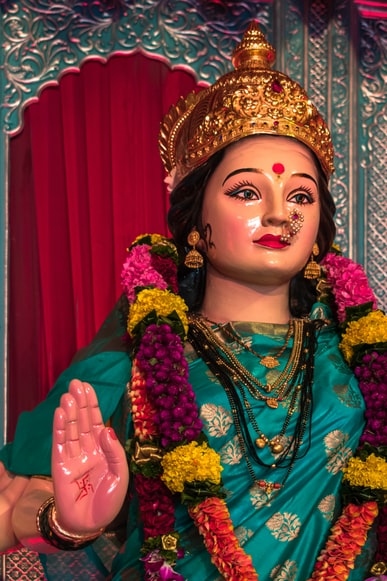(Editor’s note: This is the the final rejoinder by Rajeshwari Godbole to a series of articles and comments the original article Hindu Women: May the Hypocrisy Rest in Peace on Oct. 3, 2021.
Mr. Utkarsh,
Please bear with me as I try to understand your reasoning and response to my article. I quote:
-
“In one baffling paragraph, she also contends that India has a rich history of respecting women simply because there are some deities such as Saraswati.”
While the first part of this sentence is what I wrote, where and how did you draw the conclusion “because there are some deities such as Saraswati”? Your inference as to its reason is your own.
-
“The reality of Indian women couldn’t be farther from her portrayal. According to one United Nations report, 95% of women surveyed in Delhi felt unsafe walking in public spaces…” —
This one engages in the statistics of a specific problem but for all the statistics laid out in your response, the question that remains to be asked as related to the premise of the original article is this. Do only Hindu women experience fear while walking the streets at night because of their particular faith and/or are all the perpetrators Hindu? If not, these statistics are irrelevant to the issue at hand and should be brought up in a more appropriate discussion.
I don’t think anybody today denies women’s safety, amongst other things, as a social concern. As I have said in my article.”There is no denying that there are some portions of society where oppression of women does happen. Very much like it happens everywhere else in the world.” But what does this have to do with a specific religion? Are we not evading the actual problem with the original article which was more about assigning blame to Hinduism in a broad stroke than about acknowledging and understanding the multifactorial causes for this ill treatment of women? This leaves no scope for a nuanced discussion on the topic, don’t you think?
-
“Godbole also engages in whataboutism by arguing that women are mistreated in “Western” countries and that India has elected women into positions of power”
Two separate points made in two separate paragraphs with two different contexts. Not sure how you have connected them as if they were part of the same point?
To elaborate, how does showing our history of women, who were highly accomplished and respected deny the achievement of women in western countries? How is it connected with the issue of safety of women in some parts of India or to the existence of domestic violence elsewhere. These are all facts and do not have a reciprocal relationship though drawing one can be tempting.
Let us now address the issue of statistical inferences drawn in such matters.
-
“… ranked below Saudi Arabia”
The Reuters poll you quote is a “perceptions” poll, not actual data as this article clarifies. Think about it, does it make logical sense that India will be ranked below a country where a woman was not even allowed to travel without a male companion until very recently and much after the Reuters poll? To quote from the above article “Sanjay Kumar, director of the Centre for the Study of Developing Societies (CSDS), one of India’s top independent research organisations, said this “lack of transparency” was extremely worrying.
“How were these people [the “experts”] chosen? What is the gender divide? Where are they from? This is very important to know, but there is no information available on it,” he said. He points out that government or other public data is available for many of the parameters used to rank nations, and to ignore that in favour of perception is an “extreme shortcut”. This video does a great job putting into perspective women’s safety in India as compared to the world. As I’ve said before and I repeat, this does not deny there are serious problems with respect to women’s safety in India but to really address that we need to study our history more closely to see where and how we got here along with contemporary factors that have a significant influence such as bollywood.
Equal weightage should be given to all experiences. Just as one cannot dismiss a bad experience, one cannot dismiss a good one either (of which you will find many, both Indian and foreign, here’s one).
-
“Hinduism is a beautiful way of life that emphasizes equal treatment and respect. It is our obligation as Hindus to ameliorate the marginalization and oppression of women in society rather than ignore its existence.”
I’m glad we agree here! Rather than blame the Hindu philosophy for the condition of women, if we study it closely, which we haven’t done for a long time, we can actually use Hinduism’s resources to improve it. What would go a long way is to take individual responsibility without assigning blame or allowing divisions to be created among ourselves.
ॐ सर्वे भवन्तु सुखिनः ।(May all be happy)
सर्वे सन्तु निरामयाः । (May all be healthy and free from disease)
सर्वे भद्राणि पश्यन्तु । (May all see all that is good)
मा कश्चित् दुःख भाग्भवेत्॥ (May no one suffer)
ॐ शान्तिः शान्तिः शान्तिः ॥
(Rajeshwari Godbole, no degrees relevant to this conversation, just a commoner, who loves the Hindu ideology because it is teaching her to rationally and logically question the hierarchies and rituals present in Hindu society today and then go to the source as much as possible to figure out where and why the distortion is.)














